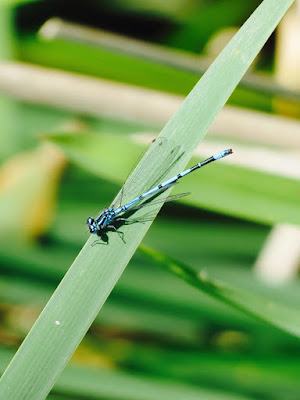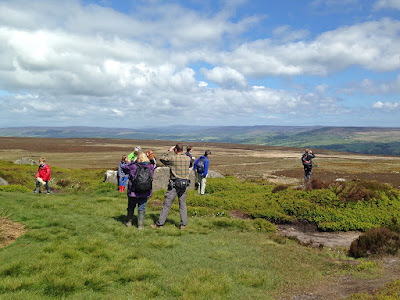We met in the car park behind the St Ives visitor centre, as Swallows zipped around our heads. As we waited for the the sky yo darken, Cam gave the group a brief introduction to bats and their behaviour. Not that the Otters needed much introduction - they already knew a lot about bats already!
It was a still and dry evening, which is ideal, as bats cannot “see” in the rain and so don’t come out to hunt. British bats include 18 species – all of them quite small. The largest is the Noctule bat which is still smaller than the palm of your hand. They are all insect-eating - or insectivorous - nocturnal, flying mammals.
The most interesting thing about them is how they “see” so well in the dark that they can catch flying insects. They do this by “echolocation”, locating things by their echoes. To do this, bats make shouting sounds. The returning echoes give the bats information about anything that is ahead of them, including the size and shape of an insect and which way it is going.
We shared out our bat detectors, which are small boxes which translate the bats’ high-pitched squeaks into sounds we can hear. Then, as darkness fell, we set off up Cross Gates Lane behind the golf club, towards the tree-lined fields and derelict barns. At the edge of the golf course, where the trees form a sheltering U-shaped area, we spotted our first Pippistrelle bats.
Watching bats, St Ives, Bingley - Saturday 5th September 2015
At the barns the detectors soon picked up bat activity in series of short, sharp stutters, but the bats themselves were harder to see. With a few torches up in the trees, we soon spotted more Pippistrelle bats. They were flying just under the canopy of the trees – where the branches spread over the lane to form a long high “tunnel” and the insects shelter from the breeze.
After watching and listening at the barns we moved back down the lane and on to Coppice pond, where the water attracts lots of insects and we were able to hear Daubenton’s bats - the “water bat” - moving out over the lake. The bat species can be told apart by their behaviour and the frequency of their calls: how high or low they squeak. Though we did not find it easy to differentiate many species, there was lots of bat activity to keep us occupied.
Looking for crayfish, St Ives, Bingley - Saturday 5th September 2015
As a bonus to the evening, one of our younger members pointed out that there were small fish close in to the lake shore and we saw a few boldly striped perch. We also saw lots of white-clawed crayfish in the shallows. These are small, fresh-water lobster-like crustaceans. Their presence in numbers is encouraging, as St Ives have undertaken work to encourage the endangered white-clawed crayfish in Coppice Pond. Our torches also found a Moorhen, roosting in a flimsy branch overhanging the pond. This may seem an odd place for us to sleep, but for a Moorhen it's the perfect place to sleep safe from Mink and other predators.
Moorhen, St Ives, Bingley - Saturday 5th September 2015
Thank you to everyone who came and made this such an enjoyable event.



















































